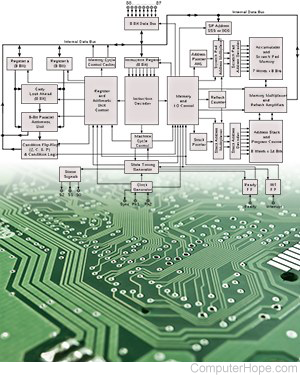Microarchitecture

A microarchitecture is a hardware implementation of an ISA (Instruction Set Architecture). An ISA is a structure of commands and operations used by software to communicate with hardware. A microarchitecture is the hardware circuitry that implements one particular ISA.
For example, x86-64 is the ISA used by most modern laptop and desktop computers. It is implemented by various microarchitectures, including those designed by Intel and AMD. Software that is compiled for the x86-64 ISA can run on any microarchitecture designed to use the x86-64 instruction set.
Multiple CPU (Central Processing Unit) models may be designed for a particular microarchitecture. For this reason, a microarchitecture is sometimes called a "family" or "generation" of CPU. For example, Intel Kaby Lake (7th generation) and Coffee Lake (8th generation) are separate microarchitectures, each with a "family" of compatible CPUs.
The word "microarchitecture" is sometimes abbreviated µarch. The Greek letter µ ("mu") is the scientific abbreviation for "micro." Because this letter does not appear on some keyboards, the abbreviation uarch may also be used.
Architecture, Bus, Computer abbreviations, Computer instructions, Hardware terms
